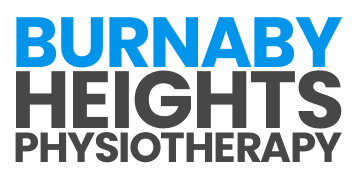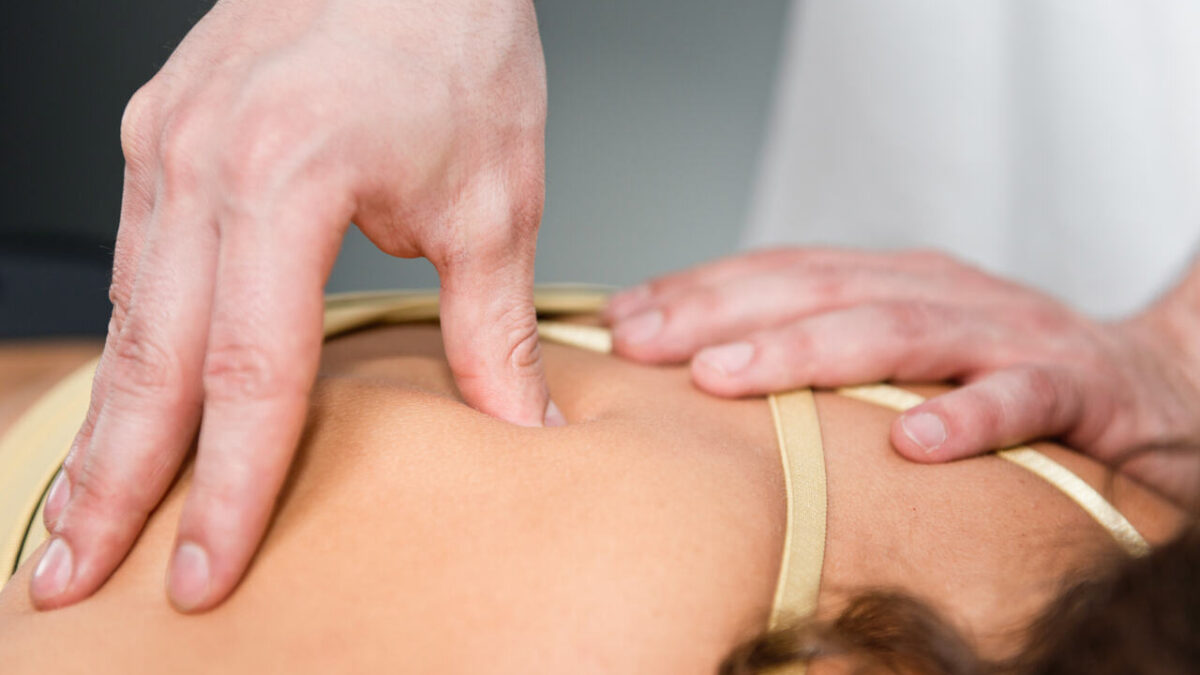
The Ultimate Headache Hack: Massage Therapy for Migraines
July 18, 2024
Relieve Your Aching Back: Unlock the Power of Massage Therapy
July 18, 2024The Power of Trigger Point Therapy Massage
Understanding Trigger Point Therapy
Trigger point therapy massage is a specialized type of massage aimed at identifying and releasing trigger points within your muscles. Trigger points, often referred to as muscle knots, are hyper-irritable spots in the muscles that can cause pain and discomfort. These points can develop due to various factors such as muscle overuse, injury, or stress.
By applying targeted pressure to these trigger points, a therapist can help alleviate pain and restore normal muscle function. This type of massage therapy is particularly beneficial for individuals experiencing chronic pain, tension, or limited range of motion. To learn more about different types of massage therapies, visit our article on types of massage therapy.
How Trigger Point Therapy Works
Trigger point therapy works by applying focused pressure to the specific areas of muscle tightness. The therapist uses their fingers, knuckles, or specialized tools to apply this pressure, which helps to break down the knots and improve blood flow to the affected area.
The process involves several key steps:
- Identification: The therapist first assesses your muscles to locate the trigger points. This may involve palpating the muscles and asking you about any areas of pain or discomfort.
- Pressure Application: Once the trigger points are identified, the therapist applies firm pressure to these points. The pressure may be held for a few seconds to several minutes, depending on the severity of the knot.
- Release and Stretching: After the pressure is applied, the therapist may use stretching techniques to further release the muscle tension and improve flexibility.
| Step | Description |
|---|---|
| Identification | Assessing muscles to locate trigger points |
| Pressure Application | Applying firm pressure to trigger points |
| Release and Stretching | Using stretching techniques to release tension |
Trigger point therapy is a highly effective method for relieving muscle pain and improving overall muscle function. For more information on how massage therapy can benefit you, check out our article on massage therapy benefits.
Understanding the power of trigger point therapy massage can help you make informed decisions about your health and wellness. Whether you’re dealing with chronic pain, muscle tension, or simply looking to enhance your overall well-being, trigger point therapy offers a targeted approach to address your needs. To explore more about therapeutic massage options, visit our section on therapeutic massage therapy.
Benefits of Trigger Point Therapy Massage
Pain Relief
Trigger point therapy massage offers significant pain relief by targeting specific areas of muscle tension, known as trigger points. These trigger points can cause localized pain or refer pain to other parts of your body. By applying pressure to these points, a therapist can help release the tension and alleviate pain.
| Benefit | Description |
|---|---|
| Localized Pain Relief | Directly targets the source of pain. |
| Referred Pain Reduction | Alleviates pain that radiates to other areas. |
| Chronic Pain Management | Helps manage conditions like fibromyalgia and chronic tension. |
For more information on how massage therapy can help manage chronic pain, check out our article on massage therapy for fibromyalgia.
Improved Range of Motion
Trigger point therapy massage can significantly improve your range of motion by relaxing tight muscles and increasing flexibility. This is particularly beneficial for athletes or individuals recovering from injuries.
| Area | Improvement |
|---|---|
| Flexibility | Loosens tight muscles, allowing for greater movement. |
| Muscle Function | Enhances overall muscle performance. |
| Injury Recovery | Aids in the recovery process by improving mobility. |
Explore more about how massage therapy can aid athletes in our article on sports massage therapy.
Stress and Tension Reduction
Trigger point therapy massage also helps reduce stress and tension. By focusing on specific areas of muscle tightness, this type of massage can promote relaxation and decrease overall stress levels.
| Benefit | Description |
|---|---|
| Stress Reduction | Lowers stress hormones like cortisol. |
| Mental Relaxation | Promotes a sense of well-being and calm. |
| Muscle Relaxation | Relieves muscle tension, leading to overall relaxation. |
For additional techniques to reduce stress and tension, you might find our article on swedish massage therapy helpful.
The benefits of trigger point therapy massage extend far beyond pain relief, improved range of motion, and stress reduction. To explore other advantages and types of massage therapy, visit our page on massage therapy benefits.
Conditions Treated with Trigger Point Therapy
Muscle Knots and Tension
Muscle knots and tension are common issues that many people face. These occur when muscle fibers contract and fail to relax, creating a small, palpable knot. Trigger point therapy massage can effectively target these knots, applying pressure to release the tension and restore normal muscle function. This technique helps to improve blood circulation, reduce pain, and enhance overall muscle flexibility. For more on how massage can help with muscle pain, check out our article on massage therapy for back pain.
| Condition | Symptoms | Benefits of Trigger Point Therapy |
|---|---|---|
| Muscle Knots | Tight, painful spots in muscles | Pain relief, improved circulation |
Headaches and Migraines
Headaches and migraines can be debilitating, affecting your daily life. Trigger points in the neck, shoulders, and upper back are often the culprits behind these painful episodes. By identifying and deactivating these trigger points, trigger point therapy massage can alleviate the tension causing headaches and migraines. This form of therapy can lead to fewer occurrences and reduced intensity of headaches. To understand more about how this therapy can help, visit our article on massage therapy for migraines.
| Condition | Symptoms | Benefits of Trigger Point Therapy |
|---|---|---|
| Headaches & Migraines | Throbbing pain, sensitivity to light and sound | Reduced frequency and intensity of headaches |
Fibromyalgia and Chronic Pain
Fibromyalgia is a chronic condition characterized by widespread pain, fatigue, and tenderness in localized areas. Trigger point therapy massage can be particularly beneficial for managing fibromyalgia and other chronic pain conditions. By addressing specific trigger points, this therapy can help reduce muscle stiffness, improve circulation, and enhance the quality of life for individuals suffering from these conditions. For additional insights, explore our article on massage therapy for fibromyalgia.
| Condition | Symptoms | Benefits of Trigger Point Therapy |
|---|---|---|
| Fibromyalgia & Chronic Pain | Widespread pain, fatigue, tenderness | Pain reduction, improved muscle function |
Trigger point therapy massage proves to be a versatile and effective treatment for various conditions. Whether you are dealing with muscle knots, headaches, or chronic pain, understanding the benefits of this therapy can guide you towards a healthier, pain-free life. For more information on different massage techniques and their benefits, visit our comprehensive guide on massage therapy techniques.
What to Expect During a Trigger Point Therapy Session
When you attend a trigger point therapy massage session, understanding the process can help you feel more comfortable and prepared. Here’s what you can expect during your visit.
Assessment and Identification of Trigger Points
Your session will begin with an assessment to identify the areas that need attention. The therapist will ask you about your pain points, medical history, and overall health. This information helps tailor the treatment to your specific needs.
The therapist will then conduct a physical examination to locate trigger points. These are often felt as knots or tight bands within the muscle. Identifying these points is crucial for effective treatment.
| Step | Description |
|---|---|
| Initial Consultation | Discuss pain points, medical history, and health status. |
| Physical Examination | Locate trigger points through palpation. |
| Pain Scale Rating | Rate the pain level to gauge the severity. |
Techniques Used in Trigger Point Therapy
Once the trigger points are identified, the therapist will employ various techniques to release the tension and alleviate pain. Here are some common methods used:
- Manual Pressure: Applying direct pressure to the trigger point to release muscle tightness.
- Stretching: Incorporating stretches to improve flexibility and range of motion.
- Dry Needling: Using thin needles to target and release trigger points (performed by qualified professionals).
These techniques are often combined to provide a comprehensive treatment. The therapist will continuously check in with you to ensure comfort and adjust the pressure as needed.
| Technique | Description |
|---|---|
| Manual Pressure | Direct pressure to release muscle tension. |
| Stretching | Enhance flexibility and range of motion. |
| Dry Needling | Thin needles used for trigger point release. |
For further details on other massage therapies, explore our articles on sports massage therapy and deep tissue massage therapy. If you have conditions like fibromyalgia, read about massage therapy for fibromyalgia to understand how massage can help manage chronic pain.
By understanding what to expect during a trigger point therapy session, you can better prepare yourself and maximize the benefits of your treatment.
Self-Care Tips for Trigger Point Therapy
To maximize the benefits of trigger point therapy massage, incorporating self-care practices is essential. These practices can help you maintain muscle health and prevent the recurrence of trigger points.
Stretching and Exercise
Regular stretching and exercise are crucial for maintaining muscle flexibility and strength. Incorporating specific stretches that target areas prone to trigger points can be particularly beneficial.
| Stretch | Target Area | Duration |
|---|---|---|
| Neck Stretch | Neck Muscles | 30 seconds |
| Shoulder Stretch | Shoulder Muscles | 30 seconds |
| Hamstring Stretch | Hamstrings | 30 seconds |
| Calf Stretch | Calves | 30 seconds |
In addition to stretching, regular exercise can improve overall muscle tone and circulation, reducing the likelihood of trigger point formation. Activities such as yoga, pilates, and light aerobic exercises are particularly effective.
Proper Hydration and Nutrition
Staying hydrated is vital for muscle function and recovery. Dehydration can lead to muscle cramps and increase the likelihood of developing trigger points. Aim to drink at least 8 cups of water daily to keep your muscles hydrated.
| Activity Level | Recommended Water Intake |
|---|---|
| Sedentary | 8 cups/day |
| Moderate Exercise | 10 cups/day |
| Intense Exercise | 12+ cups/day |
Nutrition also plays a significant role in muscle health. Consuming a balanced diet rich in fruits, vegetables, lean proteins, and whole grains can support muscle repair and reduce inflammation. Foods high in magnesium, such as spinach and almonds, can help relax muscles and prevent cramps.
Post-Treatment Care
After a trigger point therapy session, your muscles may feel tender. Post-treatment care can help alleviate soreness and enhance the therapy’s effectiveness.
- Rest: Allow your body to rest and recover. Avoid intense physical activities for 24 hours.
- Hydration: Drink plenty of water to flush out toxins released during the massage.
- Heat Therapy: Apply a warm compress or take a warm bath to relax muscles and improve blood flow.
- Gentle Stretching: Perform gentle stretches to maintain muscle flexibility and prevent stiffness.
For more information on different massage techniques and their benefits, explore our articles on therapeutic massage therapy and massage therapy benefits.
Incorporating these self-care tips into your routine can enhance the benefits of your trigger point therapy massage and promote overall muscle health.
Finding a Qualified Trigger Point Therapist
When seeking a professional to perform trigger point therapy massage, it’s crucial to ensure they have the necessary qualifications and certifications. This ensures you receive safe and effective treatment.
Qualifications and Certifications
A qualified trigger point therapist should have specific training in trigger point therapy and massage techniques. Here are some key qualifications to look for:
- Certification: Look for therapists certified by a recognized massage therapy organization.
- Education: Verify that the therapist has completed coursework in trigger point therapy.
- Experience: Ensure the therapist has hands-on experience in treating trigger points and related conditions.
| Qualification | Description |
|---|---|
| Certification | Certified by a recognized massage therapy organization |
| Education | Completed coursework in trigger point therapy |
| Experience | Hands-on experience in treating trigger points |
For more information on different types of massage therapy, you can explore our article on types of massage therapy.
Questions to Ask When Choosing a Therapist
When selecting a trigger point therapist, it’s essential to ask the right questions to determine their expertise and suitability for your needs. Here are some questions to consider:
- What certifications do you hold?
- How many years of experience do you have in trigger point therapy?
- Can you explain your approach to identifying and treating trigger points?
- What techniques do you use during a session?
- Do you have experience treating my specific condition (e.g., fibromyalgia, chronic pain)?
These questions can help you gauge the therapist’s proficiency and ensure they are well-equipped to address your specific needs. For example, if you are dealing with chronic pain, you might want to ask if they have experience in massage therapy for fibromyalgia.
Finding the right therapist can make a significant difference in the effectiveness of your treatment. By ensuring they have the proper qualifications and asking the right questions, you can feel confident in your choice and look forward to the benefits of trigger point therapy massage.






